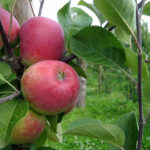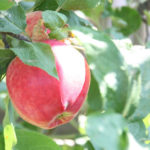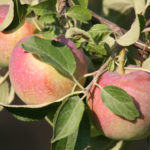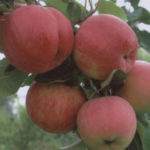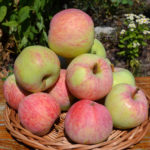Apple variety Firebird
Even in regions with favorable climates, nature often surprises in winter in the form of thaws, which are then replaced by a sharp drop in temperature. Oh, and not just fruit trees in such conditions. And even the most persistent of them - apple trees, suffer from such weather swings. But there are special varieties that are of great interest to gardeners - these are Siberian apple trees. The value of these plants is that they have high vitality. And they bear fruit without interruption, which can really be called a miracle in such unfavorable conditions. One such remarkable variety is definitely worth getting to know better. This bright beauty is called the Firebird. It was bred in 1963 at the Scientific Research Institute of Horticulture in Siberia named after V.I. M.A. Lisavenko. Authors of the variety: M.A. Lisavenko, I.P. Kalinina, T.F. Kornienko, E.S. Orekhova and Z.A. Grankin. Autumn joy of Altai and Gornoaltaiskoe were used as parental forms. The novelty was studied at the Barnaulskoye OPH from 1977 to 1991. Then an application for registration was filed, during the variety trial, one of the parents was used as a standard for comparison - Gornoaltaiskoe... In 1998, our heroine was included in the State Register of Breeding Achievements of Russia. The admission region, West Siberian, is quite extensive, includes the Republic of Altai, Altai Territory and several regions: Kemerovo, Novosibirsk, Tomsk, Omsk and Tyumen.
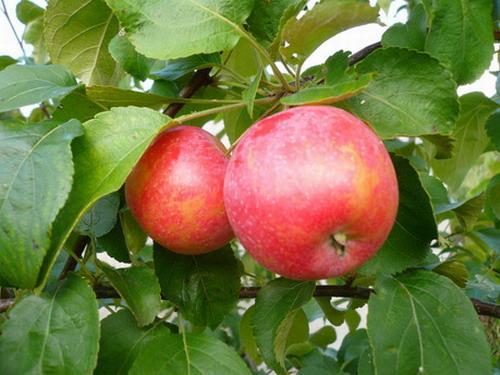
Description
The tree is compact, medium-sized, about 3 meters high. At the age of 7, the maximum height is 3.1 meters. The crown is round, not prone to thickening. The branches that form the basis of the crown skeleton are attached to the trunk at an acute angle. Such a connection is not considered strong, therefore experienced gardeners try to give the branches a more horizontal position during the formation of the apple tree. Branches are rarely located, their ends are directed upwards. The bark of the trunk and main branches is grayish-green. Shoots are straight, medium-thick, rounded in cross-section, covered with brown bark, slightly pubescent. Lentils are light, small, in small quantities. Buds are small, conical in shape, pubescent, growing pressed against the shoot. The bulk of the crop is formed on simple and complex ringlets. The leaves of the variety are green, small, rounded, with a short-pointed apex, the surface is shiny, wrinkled, the nerve is coarse, the edge is slightly wavy or even, with crenate serration. The leaf blade is concave, curved downward, medium pubescent on the underside. The petiole is of medium length, pubescent. The stipules of the Firebird are small, lanceolate.
Apple fruits attract with their one-dimensionality, correct rounded shape. The apple is slightly ribbed (VNIISPK describes the ribbing as large, smoothed). The funnel is of medium size, rustiness is light, radiant or completely absent, the saucer is medium, small, smooth or slightly ribbed. The calyx is closed, the subacheal tube is long, cylindrical. The seed chambers are closed, the axial cavity is narrow. The skin is medium thick, smooth, shiny. The main color is light yellow, it is almost completely covered by the integumentary color, in the form of a blurred bright crimson blush. The subcutaneous dots are large, in large numbers, clearly visible due to the green color, which contrasts with the crimson blush. An intense blue waxy coating is present on the surface of the fruit. The peduncle is of medium length, thin, pubescent.
The pulp of the variety is creamy, fine-grained, medium density, tender and juicy.The taste is good, sweet and sour. Assessment of tasters from 4.1 to 4.4 points. Fruit pulp Poultry fever has a rich chemical composition. 100 grams of raw material contains: sugars 9.5 - 13.1%, titratable acids 1.01 - 1.45%, tannins 100 mg, ascorbic acid 14.4 mg, pectin 3.48% on dry weight, P-active substances 216 mg. The fruits of the apple tree are small or medium, weighing from 32 grams to a maximum of 50 grams.
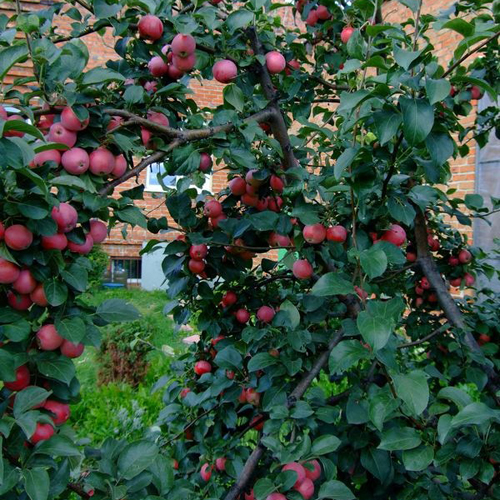
Characteristics
- Our heroine slowly enters the fruiting period. The first harvest can be expected 5 years after planting in the garden;
- in terms of ripening, the variety belongs to the summer. Harvesting maturity begins in the second decade of August (August 19 - 22). The period of consumer ripeness lasts until September 20;
- according to the State Register, the average yield of Poultry Fever was 112 c / ha, which exceeded the indicators of the control variety. In the process of variety study, which was carried out from 1977 to 1991, the average rate for 10 years of fruiting (from 1982 to 1991) was 11.2 t / ha or 20.1 kg per tree. The maximum yield of 15-year-old apple trees in 1991 was 45 kg per tree, or 25 t / ha. In the process of variety testing, which was carried out from 1991 to 1997, the average yield was 4.4 t / ha; in 1994, 9-year-old trees brought 14 kg each (or 7.8 t / ha). In 2002, the productivity of trees increased to 20 t / ha;
- fruiting is characterized by enviable regularity;
- winter hardiness is high enough. Over the years of study of the variety, carried out for 14 years, in winters of different temperature indicators, no noticeable freezing of trees was noted. The only time the wood froze was 2.6 - 3.8 points. This happened in the winter 1984/1985, which is rare for Siberia and critical for most fruit and berry plants, when the temperature dropped sharply from 0 ° C to -42 ° C. In 1985, the culture did not bear fruit. VNIISPK estimates winter hardiness as average;
- The State Register does not mention disease resistance. According to VNIISPK, the apple tree is highly resistant to scab;
- presentation and consumer properties of fruits The heat of poultry is higher than that of Gornoaltaiskiy. But apples cannot be overexposed on the tree, they quickly overripe and lose marketability;
- since the variety belongs to summer varieties, its keeping quality is, of course, insufficient. The maximum shelf life of the crop is 1 month, then the pulp becomes loose;
- but a large harvest can be used universally. The taste of apples is very good, so they are consumed in their natural form. Due to the increased content of pectin in the pulp, tasty and healthy marmalade, jelly and marshmallow can be prepared from the crop. Fruits are suitable for making jam, compote, juice and other preparations. The evaluation of compote and juice is 4.4 points, although this is slightly lower than that of Gornoaltaiskiy.
Pollinators
There is no consensus regarding the self-fertility of the culture; some sources call the variety self-fertile. In others, there is information that the Firebird is self-fertile, therefore, to increase yields, it is recommended to plant Altai ruddy apple trees next to it, Gift for gardeners or Cherished... There is no information about self-fertility in the State Register and on the VNIISPK website. By the way, if you do not want to plant another summer variety in the garden, then autumn is perfect for cross-pollination. But the winter ones are not combined with our heroine due to the mismatch of the flowering time.
Planting and leaving
Given the climate of the region in which this apple tree is zoned, the best time for planting is spring. In order to increase the winter hardiness of the plant, it is grafted onto the seedlings of Ranetki purple or a wild Siberian. As a result, the seedling is distinguished by a powerful root system and unpretentious cultivation. However, the crop must be provided with a sunny area, sheltered from the wind during winter.In Siberia, it is customary to form a variety in stanza form, which makes it easy to insulate the plant in winter. For example, snow is used as a shelter (a large snowdrift is collected around the tree), or in the absence of snow cover, spruce branches, or any other covering material that allows air to pass through, can be used. For the rest, caring for our heroine does not differ from the usual agricultural technology.
Firebird is a real find for regions with cold climates. The variety is quite fruitful, and even in an unfavorable year it will not leave without fruit. Apples as a selection, one feast for the eyes, and the taste is good. The small size will perfectly fit the plant even in a small garden, it is easy to care for such a tree. Our heroine is resistant to one of the main diseases of the culture - scab, is characterized by winter hardiness. True, in especially harsh winters, you should not give up shelter. But nothing is perfect, so this variety also has some disadvantages. The fruits must be removed from the apple tree on time, otherwise they quickly overripe, the harvest is not stored for a long time (however, like any other summer variety), and the size of the apples is small.
